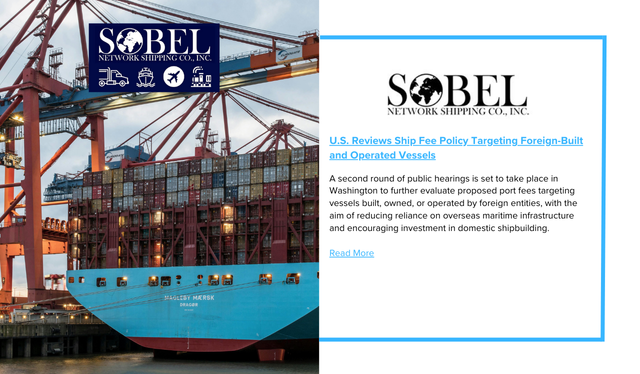A second round of public hearings is set to take place in Washington to further evaluate proposed port fees targeting vessels built, owned, or operated by foreign entities, with the aim of reducing reliance on overseas maritime infrastructure and encouraging investment in domestic shipbuilding.
These fees—originally introduced as sweeping charges—have already undergone significant revisions following industry feedback during initial hearings earlier this year. The most notable change was a shift from flat-rate charges on all foreign vessels to a more structured model based on net tonnage and container volume.
Industry observers expect the latest round of revisions to be more modest, particularly for containerized shipping. Analysts note that the initial proposal would have severely disrupted containerized supply chains, while the revised model—though still contentious—offers a more manageable framework for global carriers.
However, challenges remain, especially for vehicle carriers and bulk shippers. Agricultural exporters have voiced concerns that the additional fees could erode their competitiveness in international markets. These stakeholders argue that such costs, while intended to support U.S. maritime infrastructure, place an unfair burden on exporters by increasing logistics expenses and potentially diverting buyers to alternative sourcing countries.
Shipping consultants warn that ocean carriers are likely to pass along the new fees through surcharges, adding pressure to already strained supply chains. In addition, recently proposed tariffs on equipment critical to port operations—such as containers, cranes, chassis, and parts—could further elevate transportation costs for U.S. importers and exporters alike.
If implemented, the updated fee structure could take effect as early as mid-October or within six months, depending on the timeline set during this hearing cycle.
The maritime and logistics industry will be closely watching the outcome of the hearing, which may have significant implications for future vessel deployment strategies, import-export pricing models, and the broader competitiveness of U.S. ports.


